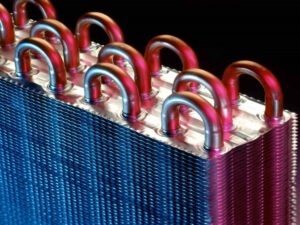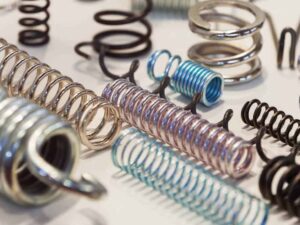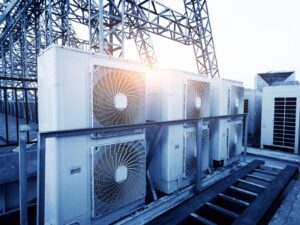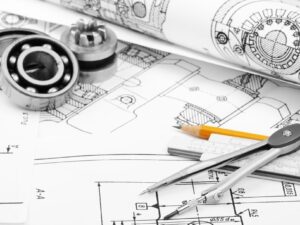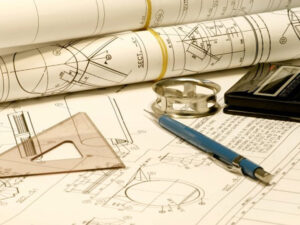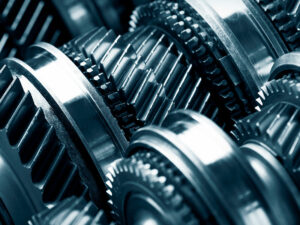DYNAMICS OF MACHINERY
- Description
- Curriculum
- Reviews
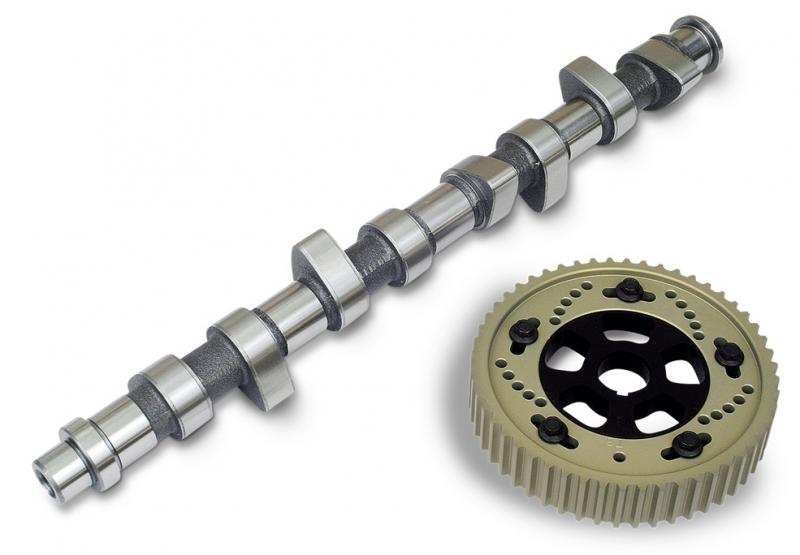
Here we are provided this recorded video course which is cover following topics suggested by university syllabus.
GUJARAT TECHNOLOGICAL UNIVERSITY
MECHANICAL ENGINEERING
B.E. 6TH Semester
Subject Code: 2161901
DYNAMICS OF MACHINERY
- Balancing of Rotating Masses: Concept of static and dynamic balancing, Analysis of effect of unbalanced masses in single and multiple planes in rotating elements, Bearing reactions. Approaches and equipment for measurement of unbalanced masses.
- Dynamics of Reciprocating Engines: (I) Single cylinder Engine: Slider crank kinematics (Analytical), Gas force and torque; static and dynamic equivalence of models (for masses). Inertia, shaking force and shaking torque, Analysis of pin forces, balancing. (II) Multi cylinder Engine: Configuration; (III) Inline engines: Effect of phase angles, firing order and number of strokes; Shaking force and moments, inertia torque and determination best configuration/ unbalanced mass. Analysis of V and radial engine configurations. Graphical methods may be demonstrated but emphasis should be on analytical approach.
- Introduction to Mechanical Vibrations: Elements of simple harmonic motion, concept of natural frequency, type of vibrations, Basic elements and lumping parameters of a vibratory system, lumping of physical systems, Concept of Degree of Freedom (DOF). (I) Single Degree of Freedom System (Linear and Torsional): Undamped free vibrations, equivalent stiffness, equivalent systems, determination of natural frequency; Coulomb and Viscous damping, Types of dampers, Damping coefficient. damping effects: under, over and critically damped system, damping factor, damped natural frequency and logarithmic decay; Analytical solution of Forced vibrations with harmonic excitation system and vector representation, Dependence of Magnification Factor, Phase difference and Transmissibility on frequency of excitation for various damping factors, Concept of vibration isolation, effect of base excitation. (II) Two Degree of Freedom System: Equation of motion and principal mode of vibration, torsional vibrations of two and three rotor system, torsionally equivalent shaft, geared system. (III) Multi degree of freedom systems and analysis (free vibrations): Concepts of normal mode vibrations, natural frequencies, mode shapes, nodes, Correct definition of natural frequency. (IV) Vibrations of Continuous System (free vibrations): Longitudinal vibrations of bar and rod: Equation of motion and solution, Lateral vibrations of beam: Equation of motion, initial and boundary conditions, solution. (V) Rotating unbalance: Whirling of shafts, Critical speed and its practical importance in design of shaft, Application of Dunkerley’s method and Rayleigh’s method for estimating the critical speed of shafts. (VI) Vibration Measurement: Introduction to vibration measurement and analysis devices: Vibrometer, velocity pickup, accelerometer, FFT analyzer.
- Cam Dynamics: Dynamic analysis of force-closed cam follower: Undamped and Damped response, Jump phenomenon: concept, effect of spring force and dead weights.
Balancing of Rotating Masses
Dynamics of Reciprocating Engines
-
7Introduction and Definitions
-
8D'Alembert's Principle
-
9Simple Harmonic Motion (S.H.M)
-
10Radius of Gyration of Rigid Bodies (Compound Pendulum)
-
11Dynamically & Kinematically Equivalent System
-
12Correction Couple
-
13Force Analysis in IC Engine Mechanism
-
14Balancing of Reciprocating Masses
-
15Balancing of Reciprocating Masses in Single Cylinder Engines
-
16Balancing of Reciprocating Masses in Multicylinder Inline Engines
-
17Concept of Direct and Reverse Cranks
Balancing of Locomotive and V Engines
Introduction to Mechanical Vibrations
Undamped Free Vibrations
Damped Free Vibrations
Forced Damped Vibrations
Forced Vibration with Rotating and Reciprocating Unbalance
Vibration isolation and Transmissibility
Critical Speed of Shafts
Multi-degree Freedom Systems and Analysis
-
47Multi-Degree of Freedom Systems
-
48Equation of Motion (By using Newton's Second Law)
-
49Flexibility Influence Coefficient
-
50Stiffness Influence Coefficient
-
51Generalized Co-ordinates
-
52Matrix Method
-
53Eigen Values and Eigen Vectors
-
54Langrange's Equations
-
55Approximate Methods
-
56Holtzer's Method
-
57Stodola's Method
-
58Natural Frequency of Shaft Carrying Multiple Rotors
Vibration Analysis of Continuous System
Rotating Unbalance
Vibration Measurements
-
72Introduction to Vibration Measurements
-
73Vibration Measurements Process
-
74Classification of Vibration Measuring Instruments
-
75Vibrometers (Amplitude Measuring Instruments)
-
76Velocity Pick-Ups (Velometers)
-
77Acceleration Pick-Ups (Accelerometers)
-
78Frequency Measuring Instruments
-
79Measurement of Damping
-
80Vibration Exciters
-
81Introduction to FFT Spectrum Analyzer
-
82Introduction to Vibration Monitoring (Condition Monitoring and Diagnosis) of Machines
Stars 5
1
Stars 4
0
Stars 3
0
Stars 2
0
Stars 1
0

